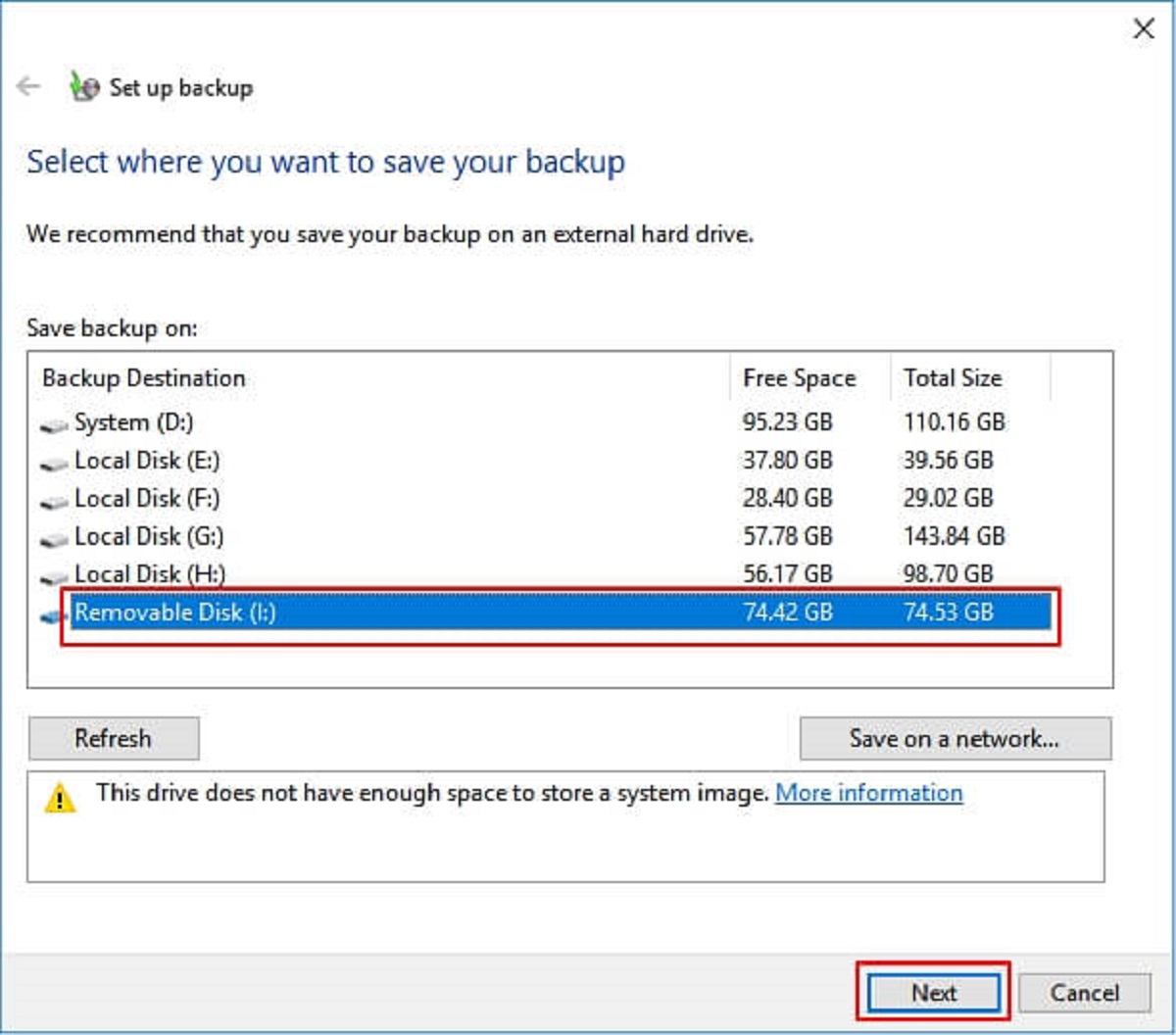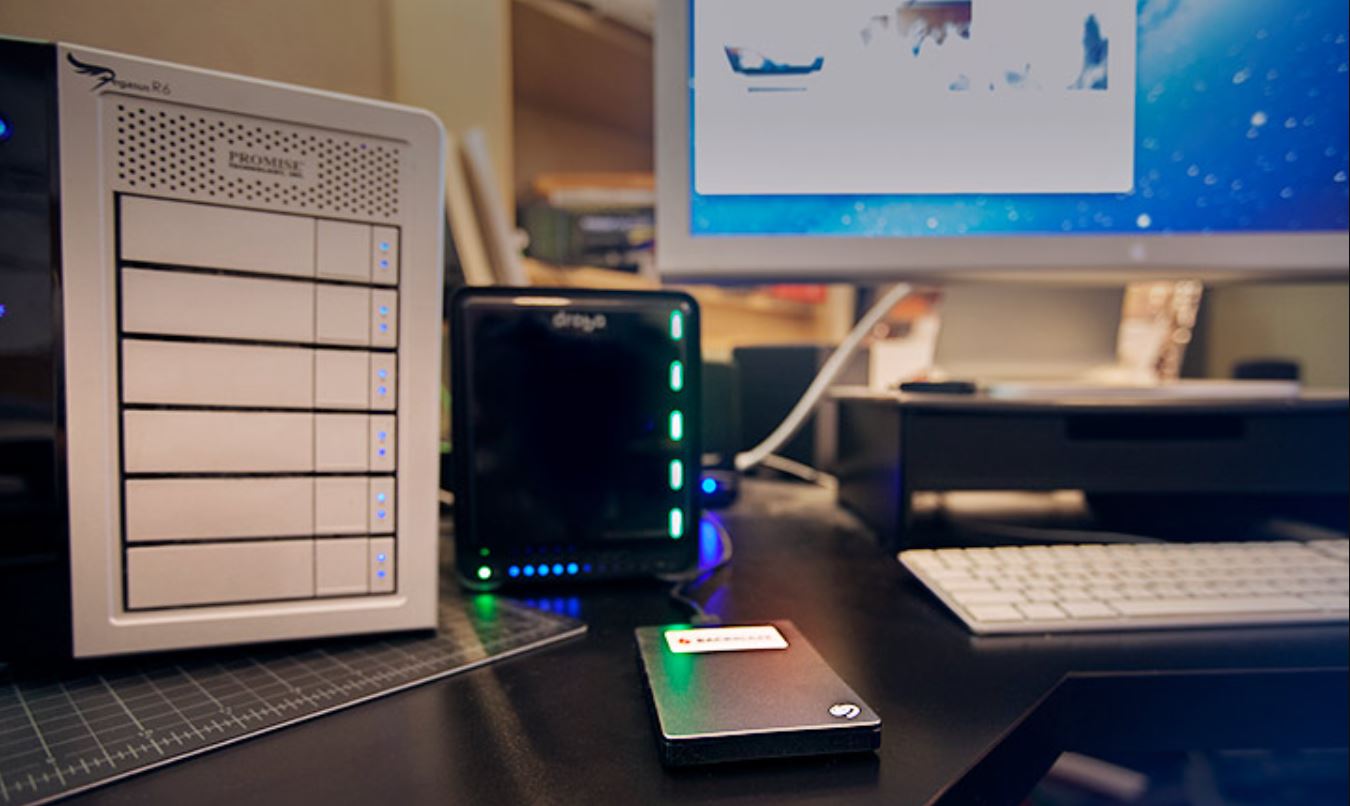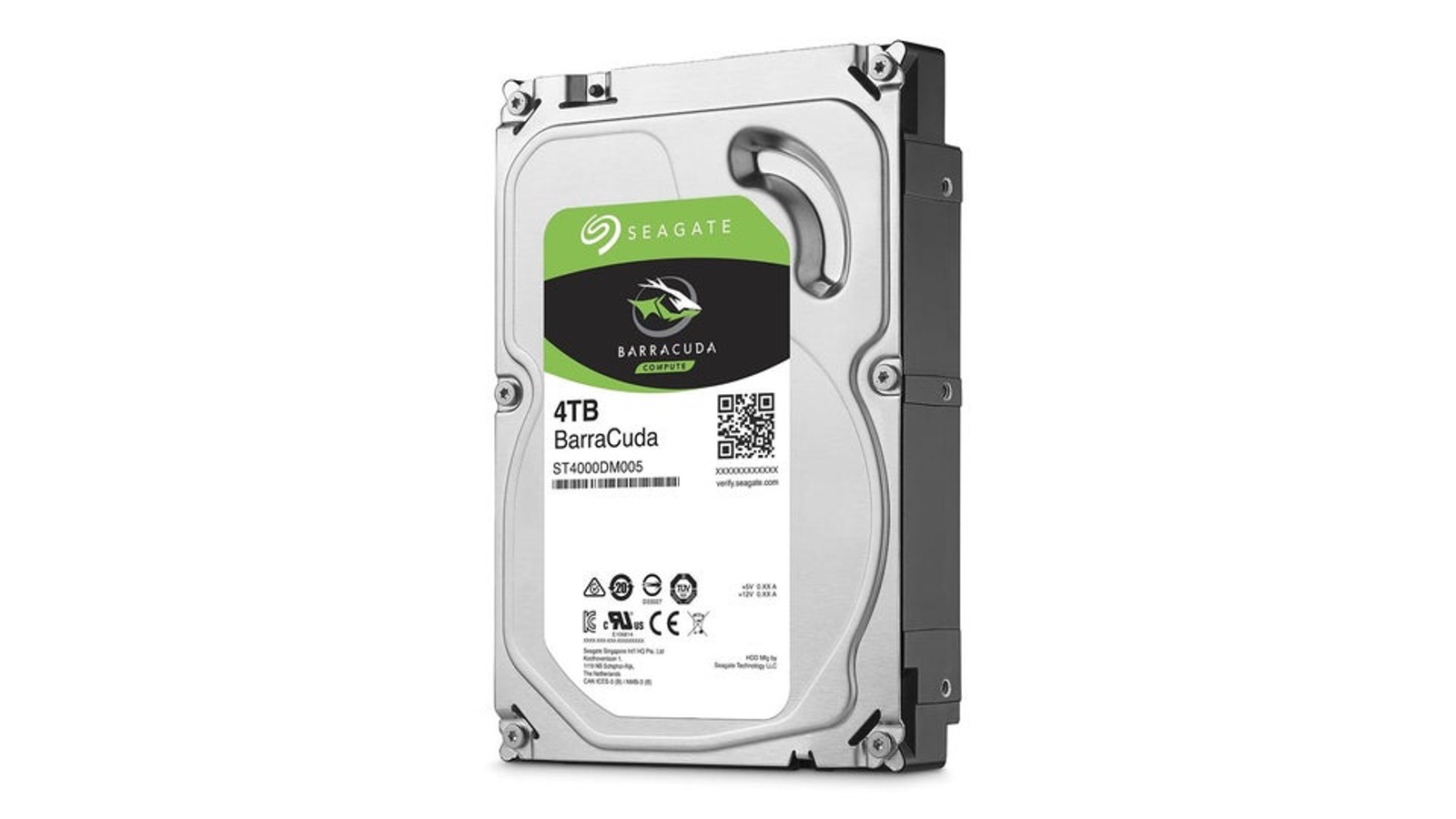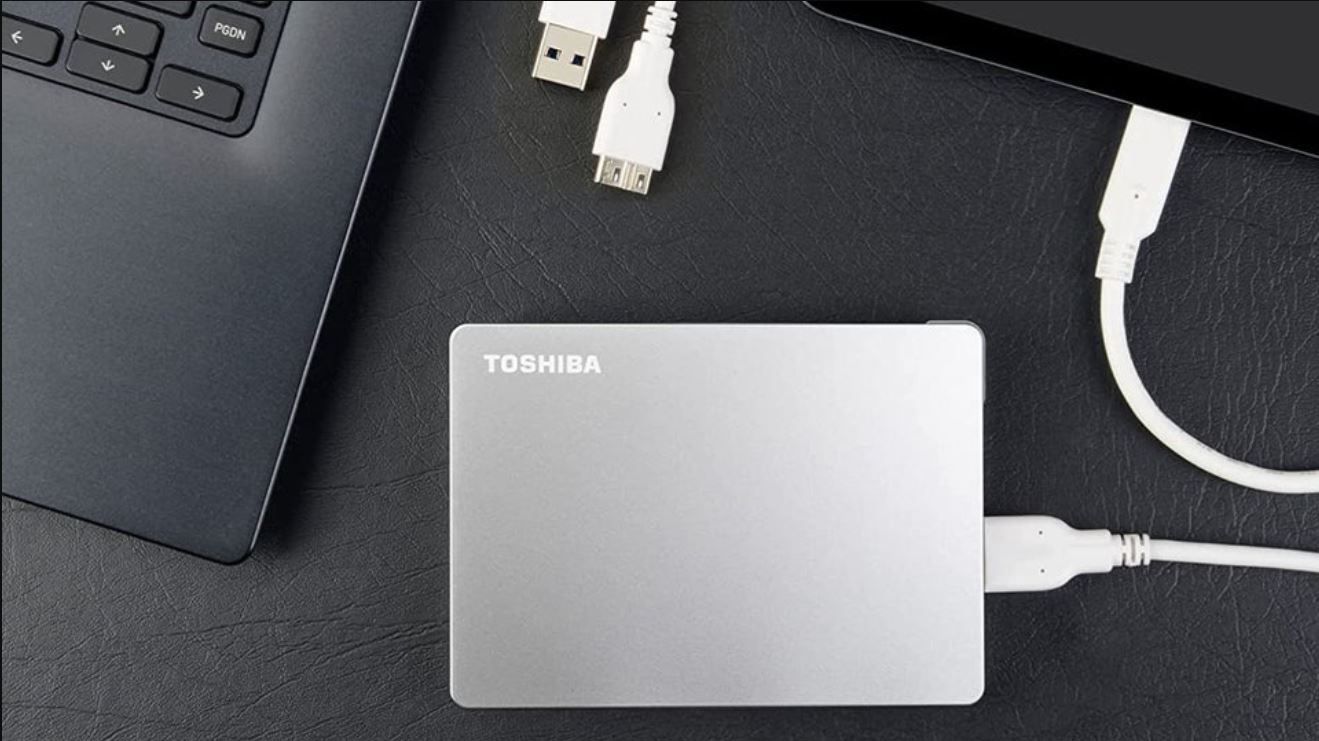Introduction
Welcome to the world of digital data, where our lives are filled with precious memories, important documents, and valuable files. From family photos to work presentations, our reliance on digital information continues to grow. However, as technology becomes more prevalent in our lives, so does the risk of data loss or corruption.
That’s why it’s crucial to have a reliable backup solution in place, and one of the most effective ways to protect your data is by using an external hard drive. In this article, we’ll explore how to set up your external hard drive for automatic backups, ensuring that your valuable files are safe and secure.
Backing up your data is like having an insurance policy for your digital life. It provides peace of mind, knowing that even if something goes wrong with your computer or if you accidentally delete important files, you can always restore them from your backup. It’s a proactive approach to safeguarding your precious information.
The key advantage of using an external hard drive for backups is that it gives you complete control over your data. Unlike cloud storage solutions, where your files are stored on remote servers managed by third parties, an external hard drive ensures that your data remains within your reach and away from potential privacy concerns.
Whether you’re a business professional looking to protect confidential documents or a photography enthusiast preserving your creative portfolio, an external hard drive is an essential tool for data backup.
In the following sections, we will discuss the importance of backing up your data, guide you in choosing the right external hard drive, provide step-by-step instructions on setting up your external hard drive, and explore various options for automatic backups.
Why should you back up your data?
In today’s digital age, with the ever-increasing reliance on technology, backing up your data is no longer an option but a necessity. It’s essential to understand the importance of data backup and the potential risks of not having a backup system in place.
1. Data loss: Imagine losing all your important files, cherished memories, and years of hard work in an instant. Whether it’s due to a hardware failure, accidental deletion, or a malware attack, the risk of losing your data is very real. By regularly backing up your files, you protect yourself from the devastating consequences of data loss.
2. Hardware failure: Hard drives, both internal and external, are not immune to failure. Over time, they can wear out or suffer from mechanical issues, rendering them useless and potentially resulting in the loss of all your data. Having a backup of your files ensures that you can quickly recover and continue working without interruption.
3. Accidental deletion: We’ve all been there – accidentally deleting an important file or folder without a backup. It’s a frustrating experience, but it can be easily avoided with regular data backups. With backups, you can restore deleted files and undo any accidental changes, saving you time, effort, and potential headaches.
4. Theft or damage: Your computer or external hard drive can be lost, stolen, or damaged in unforeseen circumstances such as fire, flood, or natural disasters. If you have a backup, your data remains protected, and you can restore it to a new device or hard drive.
5. Peace of mind: Knowing that your important files and memories are safely backed up gives you peace of mind. You can work, create, and store your data without worrying about the potential loss or damage. It allows you to focus on what truly matters without the fear of losing everything.
Now that we understand the importance of data backup, let’s explore how to choose the right external hard drive for your needs and set it up for automatic backups.
Choosing the right external hard drive
When it comes to selecting an external hard drive for your data backup needs, there are a few key factors to consider. These factors will ensure that you choose a reliable and suitable option that meets your storage capacity, performance, and budget requirements.
1. Storage capacity: The first consideration is the amount of storage space you require. Think about the size of your data and how much room you’ll need for future backups. External hard drives come in various capacities, ranging from a few hundred gigabytes to several terabytes. Assess your needs and choose a drive that offers ample space for your files.
2. Interface: The interface determines how the external hard drive connects to your computer. USB 3.0 is the most common and widely supported interface, offering fast data transfer speeds. Make sure your computer has a compatible port to connect the drive. If you have a newer computer, you may also consider USB-C or Thunderbolt connections for even faster transfer rates.
3. Drive type: External hard drives are available in two main types: hard disk drives (HDDs) and solid-state drives (SSDs). HDDs are more affordable and offer larger storage capacities, making them ideal for bulk storage of files. SSDs, on the other hand, are faster, more durable, and shock-resistant due to the absence of moving parts. They are ideal for users who prioritize speed and reliability over storage capacity.
4. Portability: Consider whether you need a portable or desktop external hard drive. Portable drives are small, lightweight, and powered by the computer’s USB port, making them ideal for on-the-go use. Desktop drives, on the other hand, offer larger storage capacities and require external power sources. They are better suited for stationary use, such as home or office backups.
5. Brand and reliability: Opt for reputable brands known for their reliability and customer support. Research customer reviews and ratings to ensure that the drive you choose has a good track record of performance and durability.
6. Backup software: Some external hard drives come with built-in backup software that simplifies the backup process. Consider whether you prefer a drive with pre-installed software or if you plan to use third-party backup software to handle your automatic backups.
By considering these factors, you can choose an external hard drive that best suits your needs. In the next section, we will guide you through the process of setting up your external hard drive for automatic backups.
Setting up your external hard drive
Once you have chosen the right external hard drive to suit your needs, it’s time to set it up for automatic backups. Follow these steps to ensure a smooth and hassle-free setup:
1. Connect the external hard drive: Start by connecting your external hard drive to your computer using the appropriate interface cable. Ensure that the drive is properly plugged in and recognized by your computer.
2. Format the external hard drive: Before you can use the drive for backups, you may need to format it to the correct file system. This step is necessary if the drive is new or if it’s being used with a different operating system. Consult the manufacturer’s instructions or search online for guidance on how to format your specific external hard drive.
3. Create a dedicated backup folder: On the external hard drive, create a dedicated folder where your backup files will be stored. This folder will help keep your backups organized and easily accessible.
4. Choose your backup method: Depending on your operating system and personal preferences, you have several options for setting up automatic backups. You can use the built-in backup software provided by your operating system, third-party backup software, or even utilize cloud storage for automated backups. Choose the method that best suits your needs and proceed accordingly.
5. Configure backup settings: After selecting your backup method, take the time to configure the backup settings. Specify which files and folders you want to include in the backup, set the frequency of the backups (e.g., daily, weekly), and choose whether you want incremental backups or full backups. These settings will ensure that your backups are performed automatically and efficiently.
6. Test your backup: Once you have set up your automatic backup system, it’s crucial to test it to ensure that everything is working correctly. Create a temporary file or folder on your computer and allow the backup process to run. Verify that the file or folder is successfully backed up to your external hard drive.
By following these steps, you can effectively set up your external hard drive for automatic backups. In the next section, we will explore different options for conducting automated backups using built-in or third-party backup software.
Option 1: Using built-in backup software
One convenient and straightforward option for setting up automatic backups on your external hard drive is to use the built-in backup software provided by your operating system. Both Windows and macOS offer native backup solutions that are relatively easy to use and configure.
Windows: If you’re using a Windows computer, you can leverage the built-in backup utility called File History. Here’s how to set it up:
- Open the Control Panel and navigate to the “File History” settings.
- Connect your external hard drive to your computer.
- Select the external hard drive as the backup destination.
- Choose the folders you want to include in the backup.
- Adjust the backup frequency and retention settings to suit your needs.
- Enable File History, and the backups will be performed automatically based on your settings.
macOS: If you’re using a Mac, you can use the built-in backup software called Time Machine. Follow these steps to set it up:
- Connect your external hard drive to your Mac.
- Open System Preferences and navigate to the “Time Machine” settings.
- Choose the external hard drive as the backup disk.
- Select the folders you want to include in the backup.
- Adjust the backup frequency and retention settings to your liking.
- Enable Time Machine, and your Mac will automatically perform backups at the specified intervals.
By utilizing the built-in backup software provided by your operating system, you can easily and effectively set up automatic backups on your external hard drive. However, if you prefer more advanced features or additional customization options, you may want to explore third-party backup software, as we will discuss in the next section.
Option 2: Using third-party backup software
If you’re looking for more advanced features or enhanced customization options for your automatic backups, using third-party backup software is a great choice. There are numerous third-party backup solutions available that offer additional functionality and flexibility. Here’s how you can set up automatic backups using third-party backup software:
- Research and choose a reliable and reputable third-party backup software that meets your needs. Some popular options include Acronis True Image, EaseUS Todo Backup, and Carbonite.
- Download and install the backup software on your computer.
- Connect your external hard drive to your computer.
- Launch the backup software and follow the on-screen instructions to set up a new backup task.
- Select the files and folders you want to include in the backup.
- Choose your external hard drive as the backup destination.
- Configure the backup settings, such as the backup frequency, retention policy, and encryption options.
- Save the backup settings and initiate the initial backup.
- Ensure that the software is running in the background so that future backups will be performed automatically based on your specified settings.
Third-party backup software offers advanced features like encryption, incremental backups, and specific scheduling options. These features can provide additional security and efficiency in managing your backups. Additionally, some third-party backup software may also offer cloud storage options, allowing you to create redundant backups in the cloud for added protection.
Before choosing a third-party backup software, take the time to read reviews, compare features and pricing, and consider your specific backup needs. This will ensure that you select the software that best suits your requirements.
By utilizing third-party backup software, you can have more control over your automatic backups and tailor them to your preferences. However, if you’re looking for an alternative to storing backups on an external hard drive, cloud storage for auto-backup might be the option for you, as we will discuss in the next section.
Option 3: Using cloud storage for auto-backup
In recent years, cloud storage has gained popularity as a convenient and accessible option for automatic backups. Cloud storage allows you to store your files securely on remote servers maintained by third-party providers, offering advantages such as data redundancy, accessibility from anywhere with an internet connection, and the ability to easily recover files in case of hardware failure or data loss.
Here’s how you can set up automatic backups using cloud storage:
- Choose a reliable cloud storage provider that meets your needs. Popular options include Google Drive, Dropbox, Microsoft OneDrive, and iCloud.
- Create an account with the chosen cloud storage provider and install the necessary desktop or mobile application for file synchronization.
- Set up a dedicated folder on your computer or external hard drive that will automatically sync with the cloud storage provider’s servers.
- Configure the synchronization settings to ensure that the folder is continually monitored for changes and is kept up to date with the latest files.
- Select the files and folders you want to include in the backup and move them to the designated sync folder.
- Enable automatic sync, and the cloud storage provider’s application will automatically upload any new or modified files to the cloud.
- Ensure that your computer or external hard drive is connected to the internet regularly so that the backups can be performed.
- Monitor the cloud storage provider’s application and verify that it is running properly to ensure uninterrupted backups.
Automatic backups using cloud storage offer the advantage of off-site storage, eliminating the risk of local hardware failure or damage. Additionally, cloud storage providers often offer versioning, allowing you to access previous versions of your files if needed.
It is essential to consider the bandwidth limitations, subscription plans, and security offered by the cloud storage provider. Encryption options and the provider’s data privacy policies should also be carefully reviewed to ensure the protection of your sensitive information.
Whether you choose to use an external hard drive, third-party backup software, or cloud storage, setting up automatic backups is a proactive step in safeguarding your valuable data. By implementing any of these options, you can have peace of mind knowing that your files are protected and easily recoverable in case of any unforeseen events.
Scheduling automatic backups
Once you have set up your preferred method for automatic backups, it’s crucial to establish a regular schedule to ensure that your data is backed up consistently. Scheduling backups will help minimize the risk of data loss and provide you with up-to-date copies of your files. Here are some tips for scheduling automatic backups:
Frequency: Determine how often you want your backups to occur. The frequency will depend on factors such as the importance of the data and how frequently it changes. Daily or weekly backups are common choices for most users.
Consistency: Stick to your chosen backup schedule to maintain a consistent routine. Avoid skipping backups or letting too much time pass between them, as this can leave your data vulnerable.
Non-peak hours: Schedule backups during non-peak hours when your computer usage is minimal. Running backups during periods of low activity will ensure that the backup process doesn’t interfere with your regular tasks or cause any slowdowns.
Automated triggers: Some backup software allows you to set up automated triggers based on specific events. For example, you can configure backups to occur when specific files or folders are modified or when specific conditions or criteria are met. This enables an even more streamlined and efficient backup process.
Notifications: Set up notifications or reminders to alert you when backups are successfully completed or if any errors occur. Regularly check these notifications to ensure that your backups are running smoothly and to promptly address any issues that may arise.
Monitor storage capacity: Keep an eye on the storage capacity of your backup destination, whether it’s an external hard drive or cloud storage. Ensure that you have enough space to accommodate all your files and make necessary adjustments if you’re running out of storage.
Review and adjust: Periodically review your backup schedule and settings to make sure they align with your current needs. As your data and requirements change, you may need to modify the frequency, files/folders included, or backup destination to ensure comprehensive and efficient backups.
By adhering to a regular schedule, you can establish a reliable backup routine that safeguards your data from any unexpected incidents. Remember that setting up automatic backups is only the first step; maintaining a consistent schedule is equally important to ensure the ongoing protection of your valuable files.
Monitoring and managing backups
Once you have set up automatic backups, it’s essential to actively monitor and manage the backup process to ensure its effectiveness and reliability. Regular monitoring will help you identify and address any issues promptly, ensuring the safety and accessibility of your backed-up data. Here are some key tips for monitoring and managing your backups:
Regular checks: Develop a habit of periodically checking your backup logs or reports to ensure that backups are being performed as scheduled. Verify that the backup software or service is running without any errors or interruptions.
Validation: Perform periodic validation checks to ensure the integrity and restorability of your backups. Select a few random files or folders and restore them from the backup to confirm that the process is working correctly.
Error handling: Monitor for any backup errors or failures and take immediate action to resolve them. Common issues can include connection problems, insufficient storage space, or file conflicts. Promptly address these issues to ensure that your backups are up to date.
Storage management: Regularly review your backup storage capacity and availability. If you’re using an external hard drive, ensure that it has enough free space to accommodate future backups. If you’re using cloud storage, monitor your subscription and consider upgrading if necessary.
Retirement or deletion: Periodically review and retire old backups that are no longer necessary. This can help you free up storage space and streamline the backup process. However, exercise caution and ensure that you keep a sufficient number of backups based on your retention policy and the importance of your data.
Software updates: Stay up to date with the latest updates and patches for your backup software. Regularly check for software updates from the provider and apply them to benefit from bug fixes, security enhancements, and performance improvements.
Review backup settings: Revisit your backup settings periodically to ensure they align with your changing needs and preferences. Consider whether you need to include additional files or folders, adjust the backup frequency, or modify any other configurations to better suit your evolving data management requirements.
Backups outside of the schedule: If you make significant changes to your files or folders outside the regular backup schedule, manually initiate a backup to ensure that the latest versions are backed up promptly.
Regular monitoring and proactive management of your backups will provide you with peace of mind, knowing that your data is being protected and accessible. By staying vigilant and maintaining good backup practices, you can minimize the risk of data loss and ensure that your backups are reliable and up to date.
Troubleshooting common backup issues
While automatic backups are designed to run smoothly and reliably, occasionally, you may encounter issues that can hinder the backup process. Understanding and troubleshooting common backup issues will help you identify and resolve these problems effectively. Here are some common backup issues and their potential solutions:
Connection issues: Ensure that your external hard drive is properly connected to your computer and that all cables are securely plugged in. If using cloud storage, check your internet connection and ensure it is stable and active.
Insufficient storage space: If you receive errors related to insufficient storage space, either on your external hard drive or cloud storage, free up space by deleting unnecessary files or consider upgrading to a larger storage capacity.
Corrupted backups: If your backups become corrupted or inaccessible, try restoring from a previous backup point or validating the backup integrity. If the problem persists, consider creating a new backup from scratch.
Software compatibility: Ensure that your backup software is compatible with your operating system and that you are using the latest version available. Check for any updates or patches that may address compatibility issues.
Backup software errors: If you encounter specific errors or warning messages from your backup software, consult the software’s documentation or contact their support team for guidance on resolving the issue.
Slow backup speed: If your backups are taking longer than expected, check your computer’s resources and ensure that no other resource-intensive tasks are running in the background. Additionally, consider using USB 3.0 or higher interfaces for faster data transfer speeds.
File conflicts: When backing up files, conflicts may arise if the backup software encounters files with identical names but different content. Review and resolve these conflicts by choosing the appropriate action, such as skipping, overwriting, or renaming the files.
Backup scheduling issues: If your backups are not running as scheduled, verify that the backup settings are configured correctly. Check for any conflicts with other scheduled tasks or ensure that your computer is powered on during the scheduled backup time.
Security concerns: If you have concerns about the security of your backups, investigate the encryption options provided by your backup software or cloud storage provider. Implement appropriate encryption measures to protect your sensitive data.
If you encounter persistent backup issues that you are unable to resolve, consider reaching out to technical support forums, software providers, or IT professionals for further assistance. Troubleshooting backup issues promptly will ensure that your data remains adequately protected and accessible for future recovery needs.
Conclusion
Backing up your data is an essential practice to protect your valuable files and memories from potential loss or damage. By utilizing an external hard drive for automatic backups, you can establish a reliable and secure backup solution. Whether you choose to use built-in backup software, third-party backup software, or cloud storage, the goal remains the same – to ensure the safety and accessibility of your data.
We discussed the importance of data backup and the risks associated with not having a backup system in place. We also explored how to choose the right external hard drive based on factors such as storage capacity, interface, and portability.
Setting up your external hard drive for automatic backups involves connecting the drive, formatting it if necessary, and selecting the appropriate backup method based on your operating system or using third-party backup software. We also discussed the option of using cloud storage for auto-backup, providing redundancy and accessibility.
To ensure the effectiveness of your automatic backups, we emphasized the significance of scheduling backups, monitoring the backup process, and managing storage capacity. We also touched upon troubleshooting common backup issues that you may encounter and provided potential solutions.
Remember, the process of backing up your data is an ongoing and proactive one. Regular monitoring, validation, and adjustment of your backup settings will help ensure the integrity and accessibility of your backed-up files.
By following the steps and guidelines outlined in this article, you can effectively set up and manage automatic backups on your external hard drive. Protecting your data is a vital responsibility, and automatic backups provide the peace of mind to continue using your computer and devices without the fear of losing valuable files. Make data backup a priority, and safeguard your digital life for years to come.

























